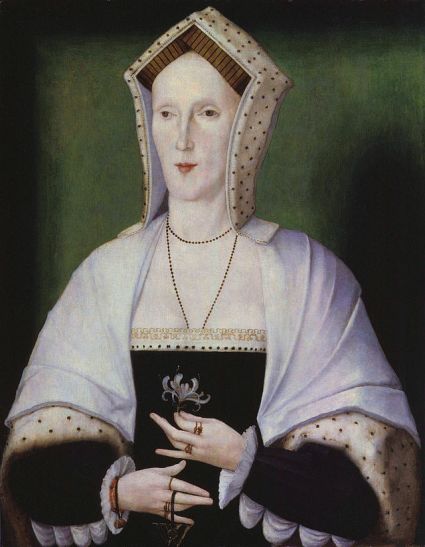We have just gotten over the anniversary of the execution of Anne Boleyn when today, May 27, it´s time to remember another one of the horrendous acts that were so frequent in the very last decade of the reign of Henry VIII: the execution of Margaret Pole, countess of Salisbury.
another one of the horrendous acts that were so frequent in the very last decade of the reign of Henry VIII: the execution of Margaret Pole, countess of Salisbury.
Something, other than the actual execution, that kind of send chills up my spine is that one might say that this was an act that definitively put the previous Royal House to rest, because Margaret was the daughter of George, duke of Clarence -immensely troubled brother of Edward IV and Richard III – and Isabel Nevill, the eldest daughter of Warwick the Kingmaker.
Margaret who together with her future issue had been barred from the throne through the attainder against her father when he was convicted and executed (according to legend by being drowned in a butt of Malmsey) for treason against his brother king Edward IV, had married Sir Richard Pole, with whom she had 5 children, one of whom was Reginald Pole, cardinal and from 1536 a thorn in Henry VIII:s eye.
Margaret and her brother were kept by Richard III at Sheriff Hutton until 1585, when her brother Edward, earl of Warwick was put in the Tower after the battle of Bosworth and later executed allegedly for plotting against Henry VII together with Perkin Warbeck.
In 1487, Henry VII gave Margaret in marriage to Sir Richard Pole with whom she had 5 children. She became a widow in 1504 with limited land left to her by her husband, whose funeral were paid for by Henry VII.
At the time of Henry VIII:s accession, Margaret Pole was returned parts of her lands, and she was one of the gentlewomen of Catherine of Aragon. Despite her Plantagenet background, she was loyal to the Tudors, and she most likely never posed any kind of threat to Henry VIII, and she was also made governess of the young princess Mary. She had devoted her son Reginald to the church, and when the changes came in the 1530´s, he had warned against the marriage with Anne Boleyn and already in 1526 he had gone into voluntary exile as a response to Henry´s demand for support in the planned divorce from Catherine.
In 1536 the rift became irreparable when Reginald Pole after he had first spoken out against the marriage to Anne Boleyn and consequently encouraged the royal houses to depose Henry. In 1536 he had slipped back to Rome and in 1537 he was made a cardinal even though he had yet to become an ordained priest.
The previous “insubordination” of Reginald Pole would come to have a disastrous effect on his family back in England.
We will most never know in a “black and white” if he based it or fact or his convenient wishes, but Henry uncovered the Courtney conspiracy. It was an assumption of treason on the part of Margaret Pole, her son Henry and other individuals. The evidence was fragmentary, based on conversations and memories but most likely mostly based on Henry´s feelings for Reginald.
The Courtney conspiracy was an idea of marrying Edward Courtaney, grandson of Edward IV and Elizabeth Woodville, and thereby second cousin of Reginald Pole to the disinherited princess Mary.
But with Reginald Pole out of reach for Henry, he instead turned on the family, not least on the aging countess who was imprisoned for two years in the Tower. She was executed on May 27th 1541 at the age of 67 in a display which clearly showed the horrors of capital punishment.
She refused to put her head on the block, but the inexperienced executioner delivered a blow anyway which instead of severing her head gave her a deep cut in her shoulder. Legend has it that she was chased around the block, being struck several times before she finally died, something which in large part is confirmed by contemporary state papers.
Margaret, Countess of Salisbury, was beatified December 29th 1886 by Pope Leo XIII.
The poem below is said to have been carved into the wall of her cell.
For traitors on the block should die;
I am no traitor, no, not I!
My faithfulness stands fast and so,
Towards the block I shall not go!
Nor make one step, as you shall see;
Christ in Thy Mercy, save Thou me!
Sources:
Henry VIII – Elizabeth Wooding
The execution of Margaret Pole, Countess of Salisbury – The Anne Boleyn Files
Executions and beheadings at the Tower of London